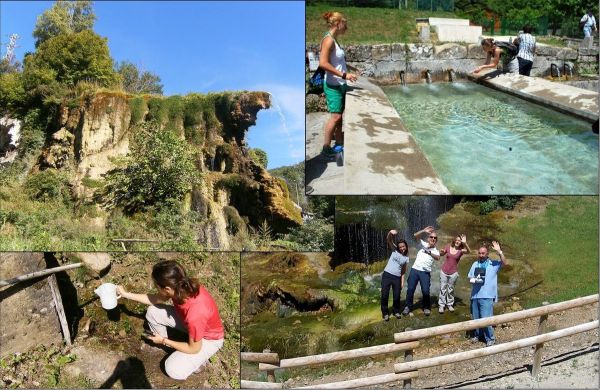Effects of tunneling and pumping on aquifers and groundwater dependent ecosystems

At BiGeA Department it is active a research line specifically devoted to study the effects of tunneling on groundwater flow systems, either in fractured or porous aquifers. Two case-studies are to be put in evidence:
1)Hydrogeological impacts of tunnel drainage inside sedimentary hard rock aquifers in Northern Apennines (Italy): the tunnels connecting Florence and Bologna for High Speed Railway connection, and excavated inside turbiditic sandstones, either silici-clastic or calcareous in nature, notwhitstanding the bulk poor permeability of the rock mass, have determined a locally huge impact against groundwater resources with shortage of spring flow, down to complete desiccation, vanishing of low flow season base flow in streams and strong lowering of hydraulic head. The main impacts were correlated with post-orogenic tectonic lineaments (normal faults in particular) and occurred along narrow stripes parallel to the lineament up to 5 km from the line of tunnel excavation.
The hydrograph of tunnel discharge puts in evidence the strong relationship with natural recharge regime, as shown in the graph.
Thanks to the huge monitoring programme of springs, streams and wells, on a total of more than 10 years time span, the research has permitted also to define a new conceptual model of groundwater flow systems inside torbiditic aquifers, not so well known up to now. The pattern of groundwater circulation is similar to that one of hard rock aquifers, characterized by: extremely high anisotropy of K distribution; discharge focused mainly on stream base flow; importance of the hydrologic recession behavior during low flow season (summer) of the spring/stream in order to evaluate the extent and importance of groundwater flow systems.
In order to evaluate and quantify the impacts a series of stream-tunnel tracer tests were performed using fluorescent dyes. In all the tests the arrival of the tracer down to the tunnels was verified successfully and it was possible to link the features of the different breakthrough curves to the lithological and structural features of the aquifers. Evaluation of the intensity of the effects induced by tunnel drainage is shown in the figure.
Main papers recently produced about the forementioned topics are:
Vincenzi V., Gargini A., Goldscheider N., Piccinini L. (2014). Differential hydrogeological effects of draining tunnels through the Northern Apennines, Italy. Rock Mechanics and Rock Engineering, Volume 47, Issue 3 (2014), Page 947-965.
Vincenzi V., Gargini A., Goldscheider N. (2009) Using tracer tests and hydrological observations to evaluate effects of tunnel drainage in the Northern Apennines (Italy). Hydrogeology Journal, 17, 1, pp.135-150.
Gargini A., Vincenzi V., Piccinini L., Zuppi G.M., Canuti P. (2008) - Groundwater flow systems in turbidites of Northern Apennines (Italy): natural discharge and high speed railway tunnels drainage. Hydrogeology Journal, 16, 8, pp.1577-1599, vers.elettronica con supplementary material: doi: 10.1007/s10040-008-0352-8.
The above mentioned research approach has permitted a mapping of GDE (Groundwater Dependent Ecosystems) representative of a sedimentary hard rock aquifers such as those typical of northern Apennines. They are represented mainly by mountain reaches of streams where environmental flows are only guaranteed by groundwater and by few main springs of ecologic importance.
Among them specific research was devoted either to petrifying springs or to springs originated by ophiolitic rocks, typical of Northern Apennines.
About aforementioned topics were produced the following papers:
Cantonati M., Stevens L.E., Segadelli S., Springer A., Goldscheider N., Celico F., Filippini M., Ogata K., Gargini A. (2020). Ecohydrogeology: The interdisciplinary convergence needed to improve the study and stewardship of springs and other groundwater-dependent habitats, biota, and ecosystems. Ecological Indicators. 110, DOI: 10.1016/j.ecolind.2019.105803.
Segadelli S., Vescovi P., Ogata K., Chelli A., Zanini A., Boschetti T., Petrella E., Toscani L., Gargini A., Celico F. (2017) A conceptual hydrogeological model of ophiolitic aquifers (serpentinised peridotite): The test example of Mt. Prinzera (Northern Italy). Hydrological Processes, http://dx.doi.org/10.1002/hyp.11090
Cantonati M., Segadelli S., Ogata K., Tran H., Sanders D., Gerecke R., Rott E., Filippini M. Gargini A., Celico F. (2016) – A global review on ambient Limestone-Precipitating Springs (LPS): Hydrogeological setting, ecology, and conservation. Science of the Total Environment. http://dx.doi.org/10.1016/j.scitotenv.2016.02.105
Gargini A., Piccinini L., De Nardo M.T., Segadelli S., Vincenzi V., Gargini A. (2014) Spring discharge and groundwater flow systems in sedimentary and ophiolitic hard rock aquifers: Experiences from Northern Apennines (Italy). In: Sharp J.M. Editor, “Fractured Rock Hydrogeology”, International Association of Hydrogeology Selected Papers n°20, CRC press/Balkema, Leiden (NL), pp.129-146.10)